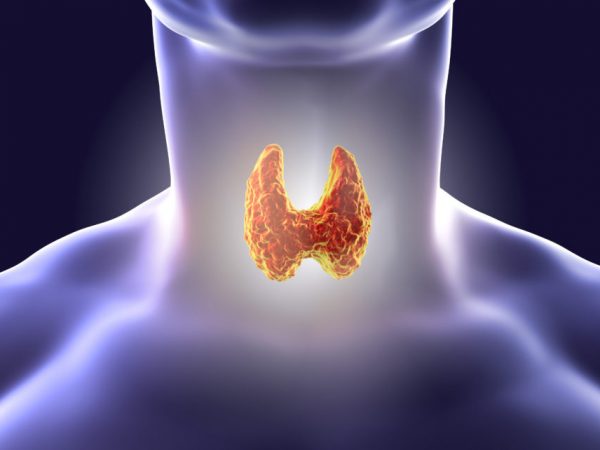Are Endocrine Disruptors Messing with Your Hormones?
Do you sometimes have trouble sleeping? Ever feel tired or lack energy? Can’t seem to lose those extra pounds? Are you aging not quite as gracefully as you would like to? Do you have aches and pains? Do you go through mood swings or become irritated easily?
If your answer is yes to any of these questions, the culprit could be endocrine disruptors. And even if you are not suffering from noticeable symptoms, there is a very good chance your hormones are out of balance, dramatically increasing your risk of disease.
But in this article, I will show you how you can have more energy, sounder sleep, better emotional balance, a stronger thyroid and less risk of cancers and reproductive ailments… just by making seven simple changes.
Look to Environment, Not Genetics
Imagine that you are a detective, given the following clues taken from Randall Fitzgerald’s “Hundred Year Lie”:
- In 1900, breast cancer was very rare. By 1960, it affected one in 20 women. Today, one out of three women develop breast cancer.
- Before 1921, a total of 20 cases of endometriosis had been reported worldwide. By 2000, nearly 20% of all U.S. women of childbearing age have endometriosis.
- A 1997 study showed that by the age of eight, one in seven white girls and half of African-American girls have started puberty.
- In the last 60 years, the average male sperm count has fallen by half… while the incidence of testicular cancer has tripled
- During the year of 2002, the number of clinical cases of gynecomastia (male breast growth) doubled.
Now, keep your detective hat on. Do you think the human race has really changed that much in the last 100 years? Or do you believe that our environment (what we breathe, what we ingest and what we put on our skin) has something to do with it?
The answer, of course, is that the human race has changed very little in the last 100 years (at least in terms of our physiology and biology).
On the other hand, what we eat, drink and rub into our skin has changed completely… in a VERY short period of time. And these changes have profoundly impacted our hormones.
RECOMMENDED: Learn the top 6 ingredients to avoid that may be lurking in your skincare products
Endocrine Disruptors: Is Modern Life Is Messing With Your Hormones?
Hormones are simply chemical messengers. They send signals from one part of the body to another. And these messenger molecules are biologically active in amounts as tiny as just one-trillionth of a gram. Now consider that the average American consumes pounds of hormones and chemicals that mimic hormones every year!
When they are in harmony, your hormones interact in a sophisticated cellular symphony that allows the body maintain the delicate state of equilibrium required for all systems to function correctly.
But when they are out of tune, discord ensues. It can lead to weight gain, infertility, sleep disorders, low libido and depression, uncontrolled blood sugar levels, suppressed thyroid function, and an increased risk of certain cancers.
So how do our hormones get out of whack?
While most people are familiar with the hormones produced inside of our bodies (like estrogen and testosterone), we often fail to realize that hormones and hormone-mimics (a.k.a.- endocrine disruptors) are introduced through the foods we eat and the products we use everyday.
And while the ill-effects of endocrine disruptors may not be seen or felt immediately, they set the stage for disease. These chemicals accumulate in fatty tissue and are released slowly into the body, dripping out their “hormonal instructions” over a long period of time.
So why is this happening? Let’s take a look at the trends that parallel the endocrine disruption epidemic:
- From 1920 to 2000, the U.S. production of synthetic chemicals increased from less than a million pounds a year to more than 140 billion pounds a year
- In 1977, the FDA finds 38% of all grocery foods sampled contain pesticides. By 1998 that number climbs to 55%
- In the 1990’s, the bottled water market heats up. In 2006 31 billion plastic water bottles were produced
- By 1980, Teflon is used in 80% of all cookware. In 2006, the EPA called for a 95% reduction in the chemicals that make non-stick products as toxicity concerns mounted
- In the 1980s, fish becomes affordable with the reliance on fish farms. In 2003 the U.S. government stated a goal to quintuple the aquaculture industry by 2025.
- In 1935, only 5% percent of the nation’s 42.8 million beef cattle were fattened in feedlots. Today, feedlot beef accounts for more than 85% of that produced.
- In 1992, the FDA announced that 65% of women’s cosmetics sampled contained carcinogenic contaminants.
- As of 1998, 75,500 synthetic chemicals were registered as appearing in consumer products, agriculture and industry. The FDA oversees 8,000 chemicals used in foods and cosmetics alone.
Endocrine disrupting chemicals are everywhere. And if you think “a little” won’t hurt you, think again. Remember: these nasty compounds can be highly bioactive at just one trillionth of a gram.
But before you throw your hands up and concede to the demise of disruptors, take heart: with a little knowledge and planning, you can greatly reduce your exposure.
Seven Simple Solutions for Better Hormone Balance
Here are the seven ways the most dangerous endocrine disruptors make their way into your body and the simple choices you can make to protect yourself.
#1 – Conventional Meats & Dairy:
Foods just aren’t what they used to be. Not only do they lack the farm-fresh taste of yesteryear, but livestock are packed into tightly cramped quarters where they’re fed unnatural diets of pesticide-treated grain and corn, given growth hormones (rBGH) and antibiotics. While it’s more profitable for the farmer, the contaminants that end up in the meats, dairy and eggs are potent endocrine disruptors. Conventional meats and dairy are also high in dioxins – potent chemicals that bind to hormone receptors in cells and alter genetic function, causing a wide range of effects – from cancer to reduced immunity to nervous system disorders to miscarriages and birth deformity.
Pollution Solution: Buy grass-fed beef and dairy, as well as pastured poultry and pork products, raised using organic principles. Because the harmful compounds are stored in fat tissue, choose leaner cuts, trim the fat and allow it to drip away during cooking. Visit EatWild.com and try U.S. Wellness Meats.
#2 – Farm-Raised Seafood:
Farm-raised fish are fed “fishmeal” – a concentrated fish product that is high in pollutants. In this case, the primary pollutants are polychlorobiphenyls (PCBs) – powerful endocrine disruptors that have been linked to hormone-related cancers, thyroid problems and feminization of men.
Pollution Solution: Choose only wild seafood that is produced sustainably. Read the package labels in the grocery. And steer clear of salmon in restaurants – it’s almost always farm-raised. For some of the best wild salmon, try Vital Choice and Target’s brand, Archer Farms.
#3 – Conventional Plant Foods:
Spotless strawberries neatly packaged and ready for purchase in December come at an exceptionally high price… even if you don’t pay it the day you buy them. Why? Imported produce may contain DDT. Although this organochlorine has been banned since 1972, it is still legal and produced in other countries (like China). And that’s likely where those strawberries came from.
Even if you’re not buying imported fruits and veggies, there’s still a big risk of contamination with conventional produce. One of the most common biocides used – organophosphates (OP) – don’t just kill bugs. They destroy nerve cells too (neurotoxins).
Pollution Solution: Reduce your exposure to pesticides by 90% by ensuring you always buy organic for the 12 most contaminated crops: peaches, apples, bell peppers, celery, nectarines, strawberries, cherries, kale, lettuce, grapes (imported), carrots, and pears.
SPECIAL NOTE: Remember – wine is made from grapes… concentrated grapes – always choose organic! Check out Dry Farm Wines for hand-selected group of wines that are quantifiably the HEALTHIEST in the world.
#4 – Plastics:
A recent study found that polycarbonate water bottles exposed to regular conditions contain harmful levels of bisphenol-a (BPA). This endocrine offender has been linked to obesity, as well as prostate cancer and breast cancer. What’s more, 95% of Americans have detectable levels of BPA in their urine.
Pollution Solution: BPA is found in polycarbonate plastic food containers (often marked on the bottom with the letters “PC” recycling label #7) as well as in the liners of canned foods. Opt instead for BPA-free plastics with the recycling labels #1, #2 and #4.
NEVER microwave plastic. And limit your consumption of canned foods or opt for Eden Foods and Vital Choice who package their products in BPA-free cans.
#5 – Non-Stick Pots & Pans:
Beneath that smooth surface lies a dangerous group of chemicals: perfluorinated compounds (PFCs). These estrogen-mimics have been linked with cancer, “polymer fume fever” and other health problems.
Pollution Solution: Toss your non-stick pans and invest in high quality, non-toxic cookware. Try Xtrema, Le Crueset, Chantal, Lodge Cast Iron and good old-fashioned glass (like Pyrex). Another great option is Chef’s Foundry. For a limited time ONLY you can get a FREE Carving Knife & Fork Set (worth $99) with every purchase of their best-selling, non-toxic P600 Cookware!
#6 – Household Products:
Chances are, most of the products in your cleaning cabinet bear the words Caution!, Warning! or Danger! Start by tossing the most toxic – those bearing “Warning” and “Danger” labels. Next, avoid products made with chlorine and fragrances, including fabric softeners and dryer sheets – which can contain estrogen-mimicking parabens and phthalates – reproductive toxins banned by the European Union.
Pollution Solution: Reduce your exposure to the laundry list of endocrine disruptors by turning to all-natural, non-toxic alternatives like products made by Tropical Traditions, Charlie’s Soap, KD Gold and Truly Free. When you need bleach, opt for an oxygen-based bleach like OxyBoost or OxiClean.
#7 – Personal Care Products:
What you put on your skin… you put in your body. And personal care products are some of the most polluted. Because the list of harmful compounds in these products is so extensive, the best advice is to only put on your body what you could safely eat.
Pollution Solution: Here are some of the most dangerous compounds to avoid: fragrances, parabens (estrogen-mimics used as preservatives), triclosan (a thyroid disruptor most commonly found in antibacterial products), sodium laurel/laureth sulfate (endocrine disruptor/carcinogen), 4-methylbenzylidene camphor 4MBC (an estrogen mimic commonly found in sunscreen).
Read labels on all personal care products and opt for mineral-based sunscreens made with titanium or zinc oxide like Jason’s Natural Cosmetics Sunbrellas.
Endocrine disruption. Hormone-mimics. Pesticide exposure. These are serious health issues that haven’t quite made it to prime time. But if you start now to eliminate these harmful compounds from your environment and diet, your reward will be better hormone balance now… and less risk of disease later.




Leave a Reply